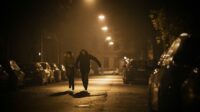At first glance, a group of Mormon teens on a mission to spread word of their religion would seem like the unlikeliest of documentary topics. Other nonfiction films this past year alone have documented the life and art of David Bowie (Moonage Daydream), the love of two inspired volcanologists (Fire of Love), an arranged marriage in a remote Hmong village (Children in the Mist), Cuban baseballers desperately trying to make it to America’s big leagues (The Last Out), and a former Marine who almost becomes a terrorist mass murderer (Stranger at the Gate). Given that those feature high-energy music, astonishing visuals, risky border crossings, and life-or-death stakes, what can a quiet, contemplative, study like The Mission—currently screening at Sundance, where it is in jury competition for the World Cinema: documentary category—offer?
As it turns out, plenty indeed, though Tania Anderson’s quietly contemplative study features none of the above. As you might expect, Mormon teens on a mission are a respectful bunch, not prone to melodrama, and the stuffed-shirt reserve of their approach keeps the film on an even keel throughout. Even without any pyrotechnics or visual surprise, though, The Mission is revelatory, charting its subjects’ journeys with an attentive care and grace that can be earned only through the bonds of trust developed between the documentary filmmaker and those she studies.
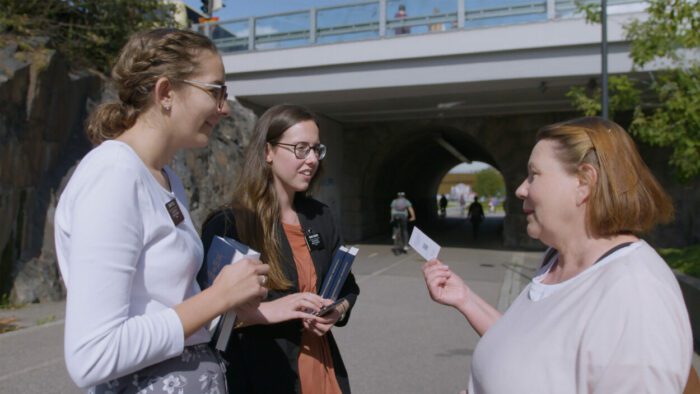
Anderson’s access is unprecedented. Even though every year over 60,000 young missionaries from the Church of Jesus Christ of Latter-day Saints spread across the world on two-year-long sojourns to preach their gospel, no filmmaker from outside the Church has ever been granted access to this missionary work. Anderson, a British, American and Swiss filmmaker based in Helsinki, spent 18 months simply gaining access to LDS missionaries before filming and another two-plus years following her four chosen protagonists before, during, and after their ventures to Finland.
The Finns hardly seem the easiest of nonbelievers to convert, given that they are among Europe’s most nonreligious, private, and skeptical people. So the four wide-eyed young Utahns traveling across the world have no easy task in front of them. As with all LDS missionaries, they will serve in same-gender pairs, hoping to teach the gospel and baptize believers, not knowing where they will be assigned or whether they will need to learn a language. They labor, unpaid, some 14-16 hours a day, with no entertainment—no parties, movies, social media, or other diversions—for the 18-24 month duration of their stay. The four teens depicted in The Mission will not only be as far from home as remotely possible, away from friends and family, but working in a country where the language is unfamiliar and the people highly reserved.
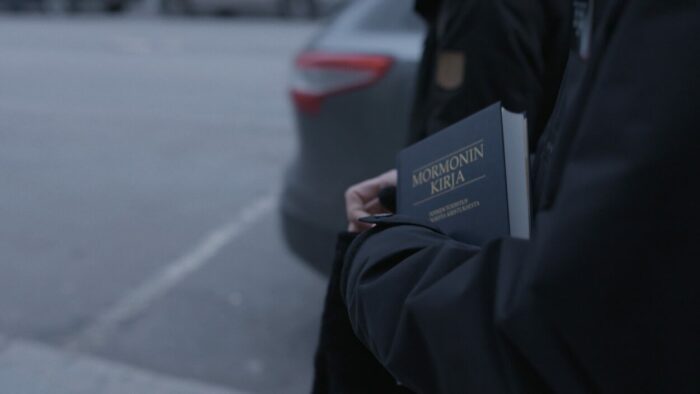
And yet, despite the difficulty of their assignment, the four teens—referred to throughout as “Elder” or “Sister”—serve their mission largely without complaint or incident. Immersed in a new culture, struggling with a new language, on their feet all day, and facing daily rejection, none of the teens gives up or suffers a debilitating crisis of conscience. In a way, what is most remarkable about The Mission is that nothing remarkable happens. Sometimes, a documentary will benefit from what befalls its subject: a significant misfortune can make for great cinema. Fortunately for Anderson’s four, their missions suffer no serious missteps or mishaps.
In some ways, the process of leaving home, traveling abroad, facing difficulty, achieving objectives, and returning home wiser and better is the basic stuff of the hero’s journey. And while one basic objective of the missionaries’ work—converting and baptizing a new believer—is at best infrequently achieved, there is still a satisfying sense of accomplishment, of completeness, in The Mission. Anderson’s four subjects—Elder Tyler Davis, Sister McKenna Field, Elder Kaii Pauole, and Sister Megan Bills—find themselves, over the course of their missions, more capable and confident young men and women, more secure in their faith, more worldly in their knowledge, and, potentially, more capable leaders in the future.
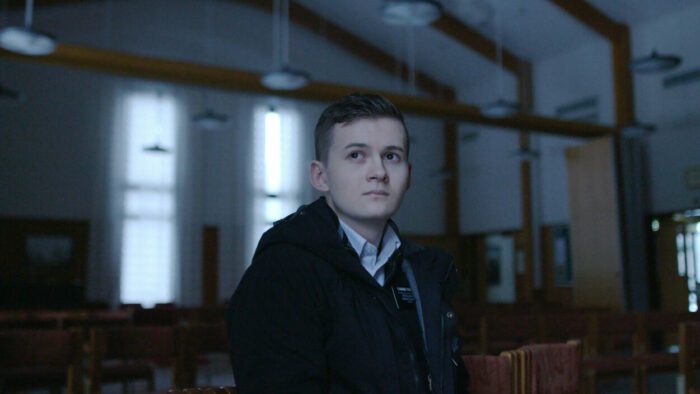
The Mission avoids any of the typical nondiegetic or direct-address “talking-heads” style interviews common to expository documentaries and opts instead for a more observational, direct-cinema approach. Armed with bibles and traveling door-to-door, the four young Mormons make for an interesting contrast with the four jaded protagonists of the Maysles’ classic 1969 documentary Salesman, armed with tactics aimed simply at selling lavishly illustrated, expensive bibles to unsuspecting and often poor housewives; the direct-cinema approach is similar even if the subjects and tone worlds apart. Like the Maysles’, The Mission avoids any lower-thirds talk-to-the-camera exposition or superimposed graphics and instead tells its subjects’ story through carefully edited and sequenced observation.
While Anderson relies on her subjects to tell their own story, largely in voice-over and in interchanges between missionaries and those they might hope to convert, she and cinematographer Antti Savolainen find thematic meaning in the repetition of images. A name tag, for instance, becomes more than a simple functional accessory; its designation of “Sisar” (Sister) or “Vanhin” (Elder) is a title earned and cherished, a rank indicating a merit—and not easily yielded back when the mission is complete. Anderson and Savolainen, together with editor Suvi Solja, sound designers Janis Grossmann and Alhambra Isa Köroglu, and composer Mikko Joensuu, find intense meaning in moments all too easy to overlook.
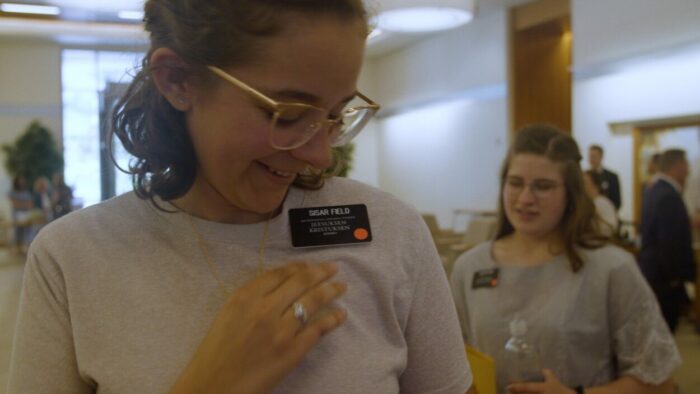
In doing so, The Mission can feel almost at times as if nothing is happening. Its two-plus years proceed quickly from selection to training to the missionary work and eventual return. Although there are struggles with self-confidence and anxiety, with belief and doubt, with isolation, The Mission goes, as I imagine it does for scores of thousands of young Mormons each year, largely without major incident. But Anderson’s film—so, so carefully shot, deftly edited, and respectfully presented—shows the rest of the world the dedication and faith of the young people who commit to their church’s work.
Written and directed by Tania Anderson, The Mission debuts on VOD and Digital January 27, 2023. In English and Finnish with English Subtitles.


